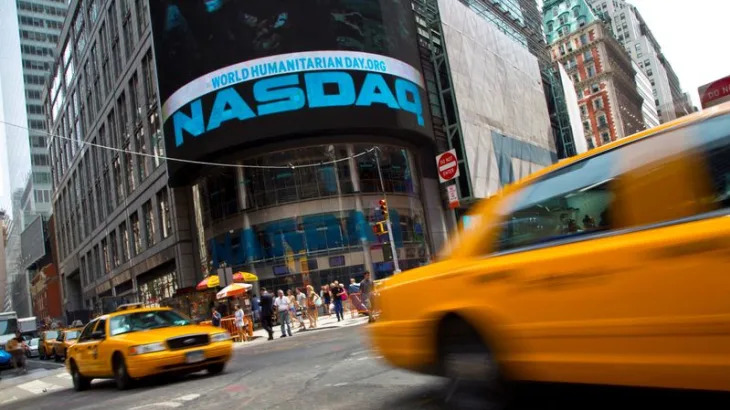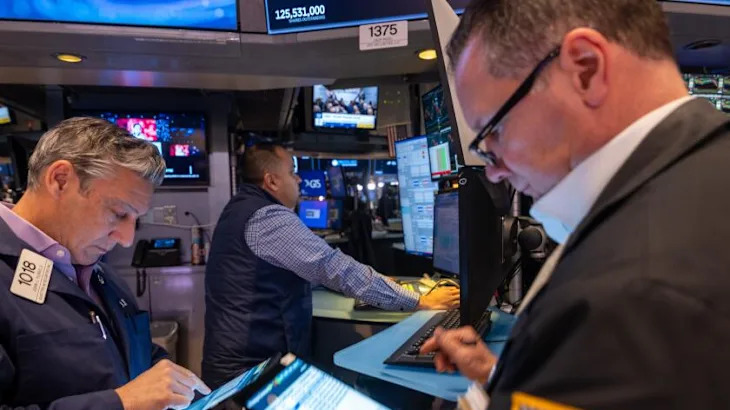(Bloomberg) -- Solid investor demand at the Treasury Department’s $70 billion auction of new five-year notes offered the latest evidence of appetite for shorter-term securities.
Yields across US debt maturities edged off their session lows after the sale on Wednesday, which saw indirect bidders — a category of investors that includes foreign central banks — took down a record 78% of the new five-year notes. That indication of strong investor demand came in contrast to recent weakness in global auctions of longer-dated debt.
“It does not appear there has been a mass exodus” of foreign investors from US debt, said Zachary Griffiths, head of investment-grade and macroeconomic strategy at CreditSights Inc. “It looks like a solid auction.”
The five-year auction spotlights a maturity that’s become a sweet spot for many investors because it’s less sensitive to monetary and fiscal policies than its shorter- and longer-dated peers.
The offering of five-year notes drew a yield of about 4.071%, slightly below the level seen immediately before the auction. It follows solid demand for a two-year auction on Tuesday and comes ahead of Thursday’s $44 billion sale of seven-year notes.
What Bloomberg strategists say...
“The amount of indirect bids submitted was also the highest ever, by a slight margin. (Perhaps Taiwan’s central bank got involved after its recent “smoothing” operations?) While directs and dealers took a correspondingly low amount of this sale, it’s hard to call it anything but solid given indirect demand and the award rate. There was little evidence of a Treasury buyers’ strike at this sale, at least.”
— Cameron Crise, strategist on Bloomberg’s Markets Live blog
Still, that appetite has yet to extend to longer-term debt, which has been dragging after a string of weaker auctions around the globe. A 40-year auction sale in Japan met the weakest demand since July.
Bonds that mature over a longer horizon have been hit as investors grow concerned about widening fiscal deficits in some of the world’s big economies, including the US.
“It’s hard to argue with the concern over the fiscal policy,” said James Athey, a portfolio manager at Marlborough Investment Management Ltd. “We are likely to oscillate fairly significantly just given the extent of uncertainty and the inflation risks which are still ahead.”
Last week, the US 30-year yield touched 5.15%, its highest since October 2023. The gap between five and 30-year yields has risen above 90 basis points, around its highest since 2021.
On Wednesday, the 30-year yield was higher by about two basis points to 4.97%.
The question for some on Wall Street now centers on when those lofty yields start to entice some buyers. In the futures market, a block trade targeting a narrower yield gap between 10- and 30-year bonds stood out.
“Bonds actually look attractive now from a yield perspective,” said Justin Onuekwusi, chief investment officer at St James Place. He added that he expected continued volatility, citing President Donald Trump’s tax bill, trade tariffs and political uncertainty.
Federal Reserve officials, meanwhile, broadly agreed that heightened economic uncertainty justified their patient approach to interest-rate adjustments. In minutes from their May gathering, they pointed out that risks of both higher unemployment and inflation had risen, mostly thanks to the potential impact of tariffs.
Traders are pricing in about 44 basis points of interest-rate cuts in the remainder of 2025 — or fewer than two quarter-point reductions.
--With assistance from Sujata Rao and James Hirai.
(Updates with results from Treasury auction, market moves and comments.)





